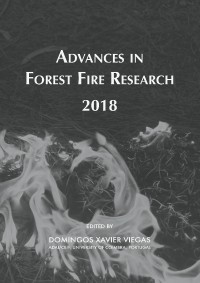Please use this identifier to cite or link to this item:
https://hdl.handle.net/10316.2/44541| Title: | Influence of fire frequency and epoch of prescribed burn on topkill rates in vegetation of Cerrado in Tocantins, Brazil | Authors: | Silva, Allan Deyvid Pereira da Batista, Antonio Carlos Giongo, Marcos Santos, Micael Moreia Neto, Eduardo Ganassoli Carvalho, Edmar Vinícius de Machado, Igor Eloi Silva Cachoeira, Jader Nunes |
Keywords: | burn severity;fire severity;forest fires | Issue Date: | 2018 | Publisher: | Imprensa da Universidade de Coimbra | Journal: | http://hdl.handle.net/10316.2/44517 | Abstract: | The severity of fire can be understood as the level of change caused by a fire to a location. Considering the importance of fire in the Cerrado biome, the objective of this work was to evaluate the fire severity, expressed through suppression of the aerial part of the vegetation (topkill), in Cerrado environment. The research was performed at the ecological station Estação Ecológica Serra Geral do Tocantins, Jalapão region, Brazil. At areas with two, three and four years without occurrence of forest fires, identified by satellite images, prescribed burns were performed in the months of May, June, August and September of 2017. The fire severity was determined through the variation of the total number of individuals before and after the fire passage. At areas with four years with no occurrence of fires, regardless of the month in which the prescribed firing occurred, topkill values did not differ statistically (45 to 56%). The three-year areas presented higher topkill values in September (66%); and the areas of two years presented the highest rates in August (62.8%). At conditions with greater accumulation of fuel material, due to the time without occurrence of fires, the period of the controlled burn (beginning of the drought or end of this season) did not influence the topkill rate of the vegetable individuals. Topkill rates among areas with different periods without burning varied only in September. The values of three and four-year areas (66 and 52.3%, respectively) did not differ from each other (p> 0,05) and were higher than rates at areas of two years with no occurrence of fire (38%). The distinction of topkill rates at locations with different periods without occurrence of fires was only possible when the prescribed burn was performed at the end of the dry season in Cerrado; that is, the period that the climatic conditions contribute to lower air moisture content and forest fuels, thus increasing the burning efficiency. | URI: | https://hdl.handle.net/10316.2/44541 | ISBN: | 978-989-26-16-506 (PDF) | DOI: | 10.14195/978-989-26-16-506_24 | Rights: | open access |
| Appears in Collections: | Advances in forest fire research 2018 |
Files in This Item:
| File | Description | Size | Format | |
|---|---|---|---|---|
| influence_of_fire_frequency.pdf | 846.44 kB | Adobe PDF |  |
Items in DSpace are protected by copyright, with all rights reserved, unless otherwise indicated.
